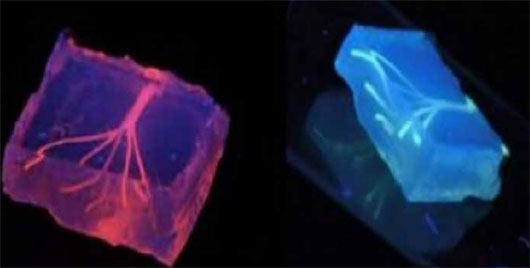Print human blood vessels with 3D printers
A group of scientists at Brigham and Women Hospital in Boston, USA, succeeded in producing blood vessels using 3D biological printing technology, Phys.org said.

First, the researchers used a 3D biological printer to create a sample of agarose sugars (a naturally occurring sugar molecule) as a 'mold' for blood vessels. They then coated these molds with hydrogels, shaped the casting pattern on the mold and then reinforced it by optical cross-linking (photocrosslinks) .
Ali Khademhosseini, the head of the research team, explains that their group's problem-solving approach is unique because the fibers created by Ali's team are strong enough to not be broken when forming blood vessels.
Blood vessels are part of the circulatory system in our body, helping blood circulation throughout the body, providing nutrients to the body. Therefore, the printing of blood vessels with 3D printing technology is considered a big step because until now, although 3D printing technology has developed, people still cannot print blood vessels.
According to Khademhosseini, the future application of the technology could help make customized transplants or develop safe and effective drugs outside the body.
- 3D blood vessels
- 3D printers are smaller than cells
- It is possible to create skin layers including blood vessels using 3D biological printers
- Apple develops device that predicts heart attack by listening to blood vessels?
- Blood vessels cultured from skin cells
- 3D printers can print both wood, limestone and metal
- Researching 3D printers can print things for astronauts from their own ... feces
- How does blood pressure work?
- Print blood cells with 3D technology
- Medical breakthrough: culture of blood vessel walls
- Green light helps thicken artificial blood vessels
- The new 'glued' glue is weakened by blood vessels
 Green tea cleans teeth better than mouthwash?
Green tea cleans teeth better than mouthwash? Death kiss: This is why you should not let anyone kiss your baby's lips
Death kiss: This is why you should not let anyone kiss your baby's lips What is salmonellosis?
What is salmonellosis? Caution should be exercised when using aloe vera through eating and drinking
Caution should be exercised when using aloe vera through eating and drinking